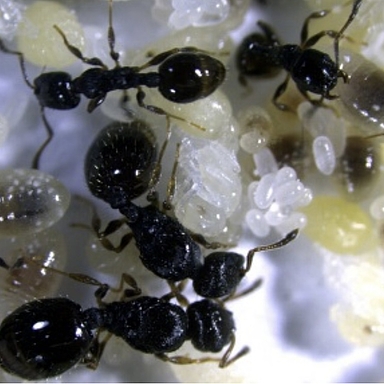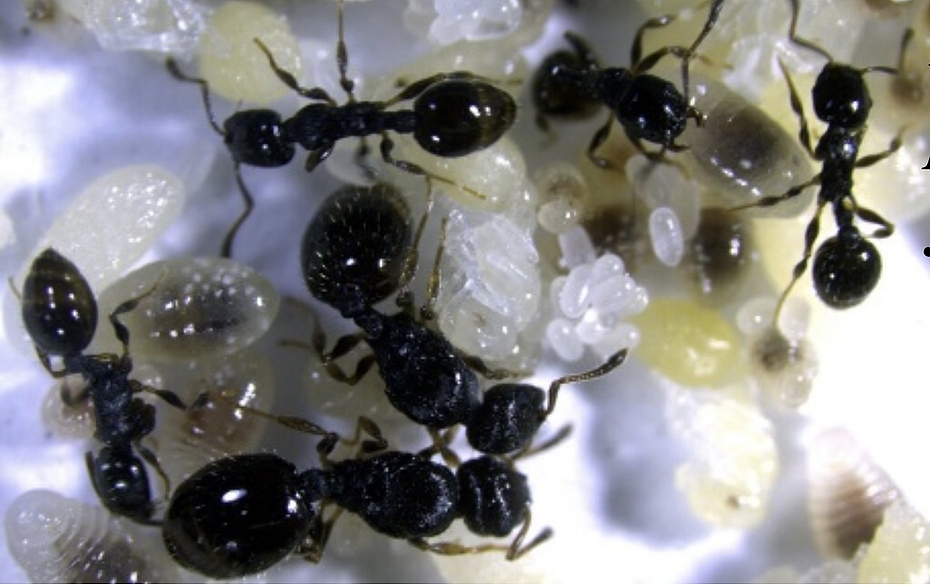Project 12.2

- PhD student: Ina Knuf
- Supervisor: Susanne Foitzik
- Further TAC-members: Hanna Kokko, Hugo Darras, Peter Baumann
- Research Group
Insect societies are characterized by division of labor in which specialized group members undertake different tasks. Task allocation and worker behavior are linked to gene expression, particularly the expression of olfactory receptors in the antennae. However, the role of epigenetic mechanisms, including miRNAs or transcription factors, in regulating this task-related transcriptional activity remains unclear. By combining behavioral, molecular-biological, and theoretical approaches, I will investigate the relationship between phenotypic plasticity, gene expression, and division of labor.
Colonies of social insects, such as ants, termites, some bees, and wasps, are characterized by a division of labor (DOL) where specialized group members undertake different tasks, with task allocation remaining flexible. Workers can change tasks depending on the needs of the colony. Task allocation and worker behavior are linked to gene expression. For instance, high expression of vitellogenin-like A in the fat body leads to brood care behavior (Kohlmeier et al., 2018, 2019), and brood care workers and foragers differ in the expression of olfactory receptors in the antennae (Caminer et al., 2023). Epigenetic factors, such as histone acetylation, can influence the ability of workers to switch tasks (Kohlmeier et al., 2023). However, the role of other epigenetic mechanisms, such as miRNAs or transcription factors, in regulating task-associated transcriptional activity remains unclear. The threshold theory posits that group members perceive task-related signals similarly but have different thresholds for responding to these signals. Contrarily, our group recently demonstrated that varying the activity of half of all odorant receptors in the antennae leads to significant differences in odor perception between brood carers and foragers (Caminer et al., 2023). This highlights the importance of the peripheral nervous system in task regulation and suggests a possible sensory filter.
We plan to expand on these findings by linking individual worker behavior and task performance to antennal gene expression. By observing the behavior of entire colonies, we will create behavioral profiles of individual workers and link the activity of olfactory receptors to worker behavior. Additionally, we will manipulate task allocation within the colony to analyze the transcriptional regulation of task switching and the underlying regulatory mechanisms. Using RNAi-mediated silencing of the task-specific brood care gene vitellogenin-like A (Kohlmeier et al., 2018; Miyazaki et al., 2021), we will investigate how this gene influences the regulation of odorant receptors and the proposed sensory filter. Given that initial results indicate differences in miRNA activity in the brains of brood carers and foragers, we will also analyze miRNAs from the antennae to determine their role in regulating odor receptors. Our objective is to elucidate the regulatory mechanisms controlling the division of labor in insect societies and understand how a potential sensory filter is dynamically regulated. This project aims to provide new insights into the epigenetic regulation of the division of labor and enhance our understanding of task-specific gene expression within social colonies.
